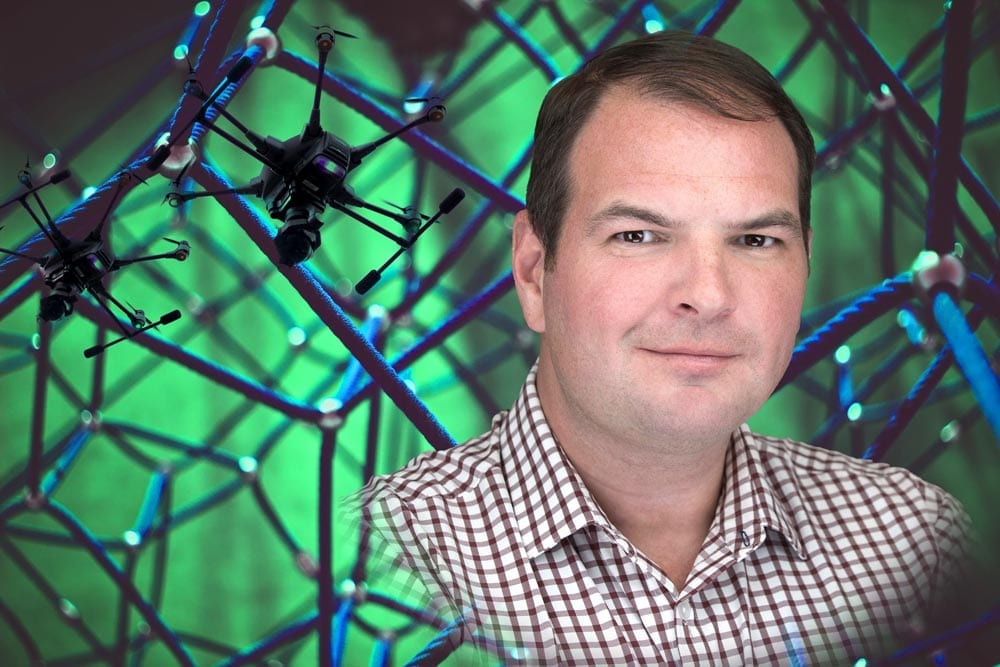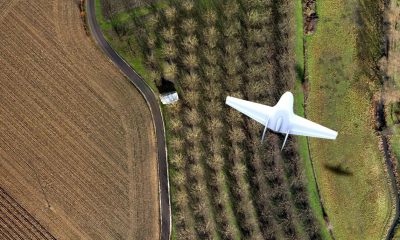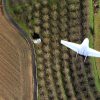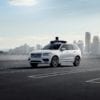The Data that Drives the Drones: Interview with Nathaniel Gates, Alegion CEO
For drones to make decisions in flight and operate autonomously, they need to be trained on any and all objects and data they may encounter.
Austin-based startup Alegion, a leader in data training and supervised machine learning, leverages AI software with human intelligence to analyze drone video footage to properly categorize images and train the drone to recognize real-world features in flight, such as aircraft, buildings, topography, landing sites, and much more.
With the UAV drone market expected to reach $48.9 billion by 2023, AI is expected to double annual economic growth rates by 2035.
As the industry continues to grow, drones will increasingly need to process the data that drives AI effectively in order to correctly identify objects and capture relevant data when flying overhead.
We talked to Alegion’s CEO, Nathaniel Gates, to get a deeper understanding of what Alegion is doing to ensure this happens.
Can you start by telling us more about how you got into AI and what about it ignites your interest?
Alegion has been providing crowdsourcing automation since 2012. Over this period of time, we have seen a transition in customer use cases from general business automation to artificial intelligence training. In 2016 Alegion made a strategic move to build software exclusively to that end. I am fascinated and motivated by the imperative necessity of human interaction in developing and improving artificial intelligence.
In a nut shell, what is ‘deep learning’? How does this differ from simpler forms of ‘AI’? How important is good data to training an effective AI?
Deep learning involves very large neural networks and very large training data sets. In theory, ‘supervised learning’ (a form of training) causes deep learning algorithms to continually improve their ability to estimate the ‘right’ answer to a specific problem. Training involves presenting the deep learning model with example questions along with the right answers.
Deep learning works best when models are exposed to a huge number of example questions and correct answers (which are sometimes referred to as ‘ground truth’ results).
While in theory everything works out, a deep learning model will learn to estimate whatever ‘right answers’ are in the training data it is provided. If the examples are bad or the answers are actually wrong, then the deep learning model will learn the wrong things.
What is Alegion’s unique approach to tackling the complexities of training AI?
Alegion uses both human and machine intelligence to provide high quality training data for AI and ML models. Alegion leverages a network of thousands of trained supervisors that provide accurate data labeling for a variety of AI customer initiatives. Additionally, Alegion uses artificial intelligence to initially process the data and recommend optimal solutions. When coupled with Alegion’s AI, the human workers become ‘super trainers’ that are capable of providing ground truth data at near unlimited scale.
What are the implications for industry making increasing use of AI trained IoT devices and machines?
As more and more discrete systems become connected and intelligent, the impact on industry will be absolute. Previously non-integrated systems will now collaborate to provide the best possible outcome. As most recently seen in the Internet revolution, every facet of every industry will leverage AI in a drive towards greater efficiency. A new AI economy will arise, just as the internet economy, offering new products and services built on the shoulders of this new enablement.
What are the potential applications, and problems AI such as this can solve? How has Alegion’s AI training specifically been applied to the field of UAVs?
The UAV market is a natural early adopter of AI integration. Presently, UAVs are able to capitalize on systems such as obstacle avoidance, gps, prescribed constraints to execute the most efficient route. Soon, these vehicles will be directly interacting with other discrete AI systems to dramatically increase utility and efficiency. Industrial drones will communicate continuously with other intelligent systems such as corporate dispatching AI for instructions and tasks, regional transport authorities, weather systems, and even other UAVs to ensure coordination and prioritization of all transport events.
Alegion is presently working on a number of UAV initiatives for our customers. These initiatives include Computer Vision training for object identification and classification with the goal of training drones to understand what they are seeing. This gives the UAV the ability to make local decisions as data becomes available. For example, a drone can decide where to drop off a package based on a real time visualization of the scene.
If you could say one thing to a potential customer to convince them of how Alegion’s technology will help them streamline workflow and data processing, what would it be?
Alegion can increase the confidence in your AI and ML models by provided high quality, on-demand, supervised training data, at any scale.
What’s in the future for Alegion?
Alegion is paddling hard to catch the coming AI wave. We plan to continue serving as a bridge between human and artificial intelligence while providing a marketplace for machines and humans to leverage each other’s resources.
Final word on the future of AI?
Imminent.
About Nathaniel Gates, CEO of Alegion
 Nathaniel Gates is career technology worker and entrepreneur focusing on the Cloud Computing and Cloud Labor spaces. Nathaniel co-founded Alegion in 2012 and now serves as its CEO and an industry evangelist. Prior to Alegion, Nathaniel founded Cloud49, a successful cloud computing solutions provider focused on the public sector. Nathaniel has a passion for providing next generation work opportunities to people around the world who demonstrate a willingness to work hard for themselves and their families. Nathaniel lived and worked in Alaska for 36 years prior to moving to Austin, Texas with his family in 2012. Nathaniel greatly enjoys this warmer climate with his wife Wendy, and their three children Caleb, Titus, and Lauren.
Nathaniel Gates is career technology worker and entrepreneur focusing on the Cloud Computing and Cloud Labor spaces. Nathaniel co-founded Alegion in 2012 and now serves as its CEO and an industry evangelist. Prior to Alegion, Nathaniel founded Cloud49, a successful cloud computing solutions provider focused on the public sector. Nathaniel has a passion for providing next generation work opportunities to people around the world who demonstrate a willingness to work hard for themselves and their families. Nathaniel lived and worked in Alaska for 36 years prior to moving to Austin, Texas with his family in 2012. Nathaniel greatly enjoys this warmer climate with his wife Wendy, and their three children Caleb, Titus, and Lauren.
























